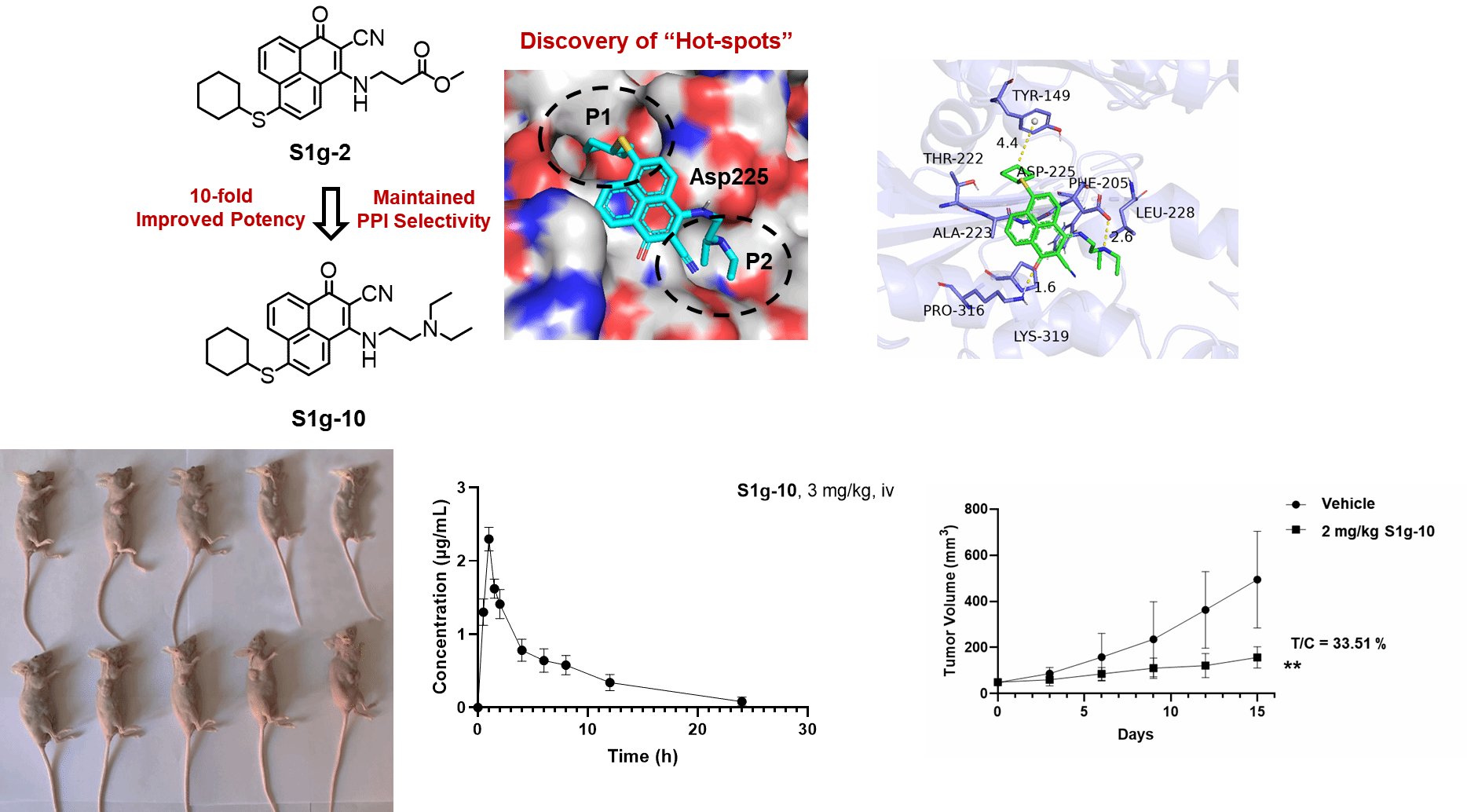
Journal of Medicinal Chemistry: Exploiting the “Hot-Spots” of Hsp70–Bim Protein–Protein Interaction to Optimize the 1-Oxo-1H-phenalene-2,3-dicarbonitrile Analogues as Specific Hsp70–Bim Inhibitors
Authors: Ziqian Wang, Hong Zhang, Xin Li, Yang Song, Yuying Wang, Zhiyuan Hu, Qishuang Gao, Maojun Jiang, Fangkui Yin, Linjie Yuan, Jingjing Liu, Ting Song, Shaohua Lu, Guanghong Xu, and Zhichao Zhang*
Abstract
Selectively targeting the cancer-specific protein–protein interaction (PPI) between Hsp70 and Bim has been discovered as a promising strategy for treating chronic myeloid leukemia (CML). The first Hsp70–Bim PPI inhibitor, S1g-2, has been identified to overcome the on-target toxicity of known Hsp70 inhibitors when it induces apoptosis of CML cells. Herein, we carried out a hit-to-lead optimization of S1g-2, yielding S1g-10, which exhibited a 10-fold increase in Hsp70/Bim suppressing potency. Furthermore, S1g-10 not only exhibited a 5- to 10-fold stronger antitumor activity in the sub-μM range against CML cells than S1g-2 in vitro, but it also overcame BCR-ABL-independent tyrosine kinase inhibitor resistance in CML in vivo depending on the Hsp70–Bim signaling pathway. Moreover, through structure–activity relationship analysis, TROSY-HSQC NMR, molecular dynamics simulation, and point mutation validation, two hydrophobic pockets composed of eight key residues were demonstrated to produce predominant interactions with either Bim or S1g-10, regarded as the “hot-spots” in the Hsp70–Bim PPI interface.

https://pubs.acs.org/doi/10.1021/acs.jmedchem.3c01783